How to Diagnose & Fix a Google Rankings Drop [2024 Checklist]
Common reasons for a Google rankings drop include changes to your website, an update to the Google algorithm, and shifts in the competitive market — but that’s just the tip of the iceberg.
If you’ve noticed a sudden drop in your website’s Google ranking, you’re not alone. With millions of results competing for the top spot and the ever-mysterious Google algorithm lurking beneath the surface, holding on to a first-page result can be a serious challenge.
To help you reclaim your Google rankings throne, our team at Magneti has put together this nifty guide for diagnosing and fixing your rankings drop. Let’s dive in!
Table of Contents
Defining a Rankings Drop
Okay, first things first: what is a rankings drop? More importantly, how do we know if a rankings drop really matters?
We’ll start by looking at two major factors: user intent and business relevance.

User Intent
Imagine that you’re in charge of Magneti, a digital marketing agency that helps businesses grow at absurd rates. One day, you notice that your ranking for the keyword “digital marketing” has fallen from spot five on the first page all the way down to number nine. Should you be concerned?
The short answer: probably not. When people search “digital marketing,” they usually aren’t looking to hire an agency. Nine times out of ten, they just want an overview of the basics of digital marketing (maybe they’re cramming last-minute for an exam!).
If, on the other hand, your ranking falls for the keyword “best digital marketing agency near me,” it might be time to sound the alarm! In this case, the searcher’s intent aligns with what you’re offering, so you need to win that keyword in order to win their business.
Business Relevance
As the hypothetical head honcho of Magneti, you’re sure to know about our campaign for Pella Windows & Doors of Colorado, where we drove $2.1 million in revenue from just $160k in advertising and services spend. We were so thrilled with the result that we put together a case study to chronicle the campaign!
Now, pretend that our case study was ranking in the top three for the keyword “window damage after storm.” Suddenly, our ranking for that keyword plummets off the front page. Panic time?
No! Though this is technically a rankings drop, it doesn’t have any relevance to Magneti’s business. After all, we’re about driving marketing growth, not replacing windows.
Situations like these are common. If you experience a rankings drop for a keyword that isn’t relevant to your business model, don’t sweat it – you’ve got nothing to worry about.
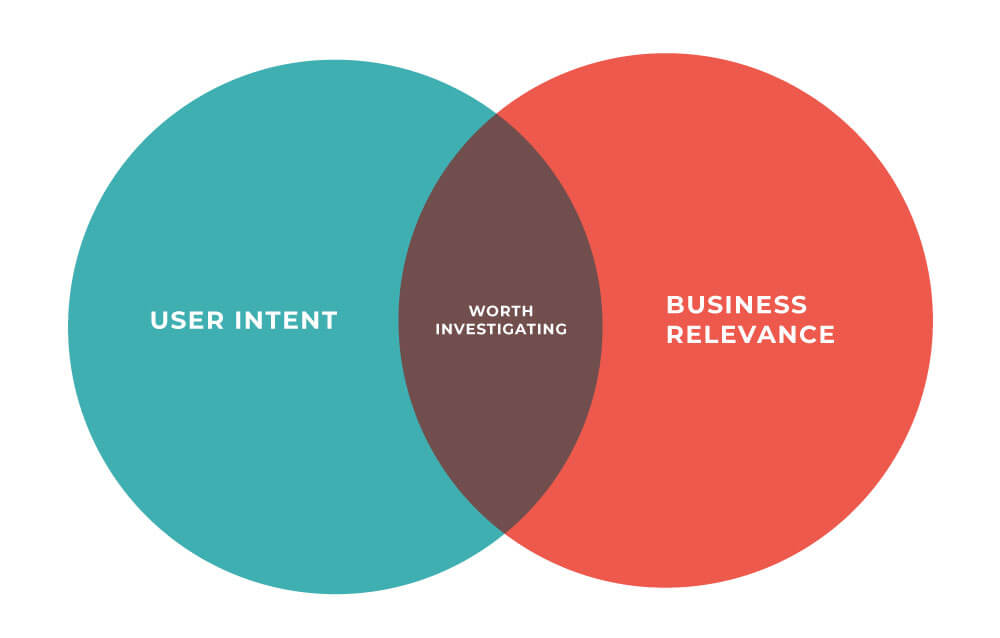
The Bottom Line
A rankings drop really matters when the searcher’s intent aligns with your product or service, especially if the keyword is integral to your business. In those cases, you’re missing out on valuable market share.
And remember, a rankings drop isn’t the same as a traffic drop! It’s natural for traffic to ebb and flow throughout the year.
If your traffic falls, but your Google ranking remains steady, you should look for other reasons behind the decrease in traffic. Thankfully, in this case, you can be confident that a rankings drop isn’t one of them.
Collecting Data & Examining the Impact
If you’ve experienced a Google rankings drop for a keyword that’s critical for your business, it’s time to put on your sleuthing hat (and, if you’re feeling theatrical, break out your pipe and magnifying glass too).
To get to the bottom of your rankings drop, you’ll have to do a bit of detective work, asking questions like:
- What dates correspond with the drop in rankings?
- Which pages were affected?
- Do any identifiable patterns emerge from the rankings drop?
- Did traffic drop along with rankings?
At this stage, you’re simply trying to paint a picture of what happened. A one-time decrease in website traffic might not be a big deal, but if multiple site pages start to perform poorly at the same time, you’ll have to make use of your analytical tools.
Helpful Tools:
Google Search Console and Google Analytics are two of our favorite tools for diagnosing a rankings drop. Google Analytics will show you changes in traffic, Google Search Console tracks clicks and impressions, and a ranking tool like Advanced Web Ranking will reveal relevant ranking changes.
Now that you’re armed with some top-notch SEO tools, let’s get down to the nitty-gritty: investigating and fixing your rankings drop. Here are the six most common reasons for a drop in ranking — and how to resolve them — courtesy of Magneti’s SEO team.
Diagnosing and Fixing a Rankings Drop

Reason 1: Manual Action Notice
A manual action notice is a lot like a speeding ticket. Basically, it’s a message from Google Search Console that says, “Hey, we noticed that your website is going against our guidelines. We don’t like that. Here’s a penalty.”
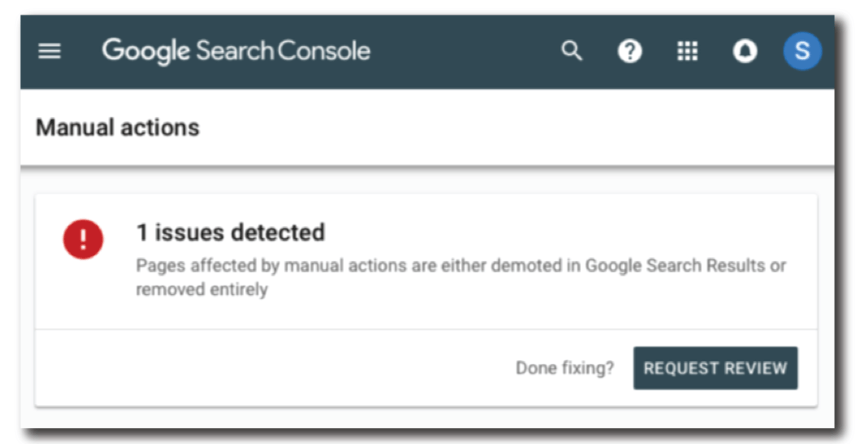
Manual action notices can be issued for a bunch of reasons. Here are a few major ones to look out for:
- Site hacking: If your website has been hacked, Google will remove it from a favorable ranking position.
- Spam: Google is not a fan of spam. If your website is riddled with spammy links — whether intentionally or unintentionally — you’re likely to get hit with a manual action notice.
- Misconfigured structured data: When you Google “apple pie recipes,” you’ll probably see a carousel of recipes with 5-star ratings next to them. Those 5-star ratings come from something called “structured data.” If you abuse structured data by, say, adding 5,000 fake 5-star reviews for your recipe, Google Search Console might hand you a manual action notice.
Possible Fixes
Thankfully, resolving a manual action notice is pretty straightforward! Just like a speeding ticket, Google will let you know what you did wrong, how you’re being penalized, and what you need to do to fix it.
Depending on why you received the notice, the solution could be simple or complicated. Be sure to follow Google’s guidelines carefully when you resolve the issue — that way, your page will leap back to its former glory in no time!
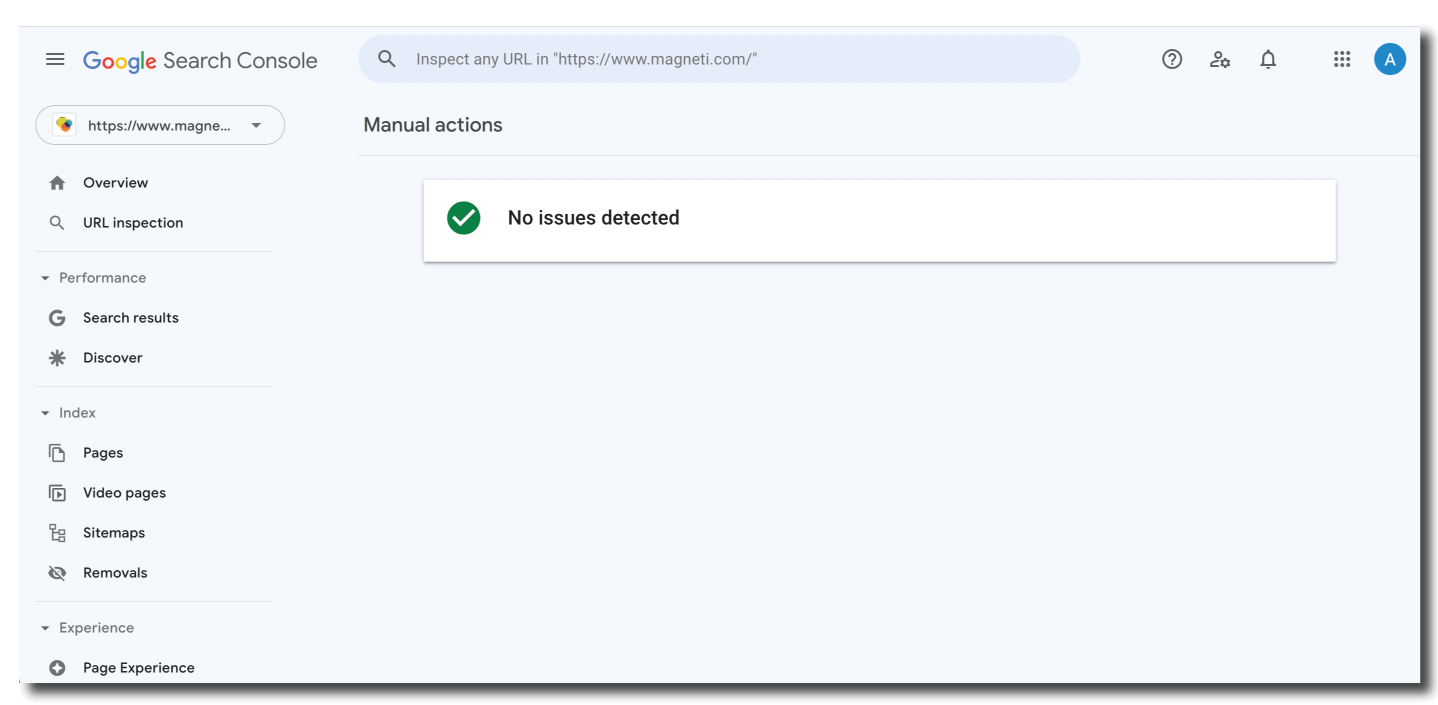
Reason 2: Website Changes
Website changes can cause a ranking drop in a LOT of different ways. We could probably write a textbook on it. (Don’t worry, we wouldn’t do that to you.)
Instead, we’ll walk through the fundamentals.
When you make what seems like a small change to your website (for example, switching themes, removing pages, or installing a plugin), there’s a chance that Google will see it as a significant update.
In response, Google will reprocess your website, testing out its trustworthiness. If Google isn’t confident that your updated site is a great place to send visitors, your site’s ranking could fall.
Remember, your perspective is usually different from Google’s perspective — so a minor change could have a big impact!
If you’ve just discovered a dramatic drop in your Google ranking, ask yourself if you’ve made any of these modifications to your website lately:
- Hosting changes: Before Google floods your domain with traffic, it wants to be certain that you can handle it. If your website isn’t stable during organic traffic surges, it won’t rank as high.
- Edits to a robots.txt file or a robots meta tag: Setting your robots meta tag to “no index” or disallowing Google crawlers by using a robots.txt file is a surefire way to get Google to ignore your website.
- Plugin or theme updates: Sometimes, switching up your website’s theme will impact the core pages of your site, causing Google to run in the other direction.
- Modified redirects: Incoming links add “SEO Juice” (a.k.a. PageRank or Domain Authority) to your website. If you decide to clean up your .htaccess file by removing old redirects, you might accidentally get rid of valuable inbound links that are helping your site rank on Google.
- Changes in user experience (UX): Fancy banners and colorful countdowns might look cool — but if they hurt the experience of your website, you’ll probably experience a rankings drop.
- Removed pages: Discarding pages from your website — even pages that seem unimportant — can actually eliminate contextual relevance signals, internal links, and authority, resulting in a rankings freefall.
Possible Fixes
Unsurprisingly, the solution to your rankings drop will depend on which website change caused the drop in the first place.
If you’ve recently removed a core page from your website, the fix could be as simple as adding that page back (or rebuilding its replacement into your site). But if you’ve remodeled your entire website, it’ll likely take some extra time to regain your lost SEO mojo.
To get back on Google’s good side, work backwards from the moment you noticed the problem. Once you’ve reverse-engineered the rankings drop and pinpointed the issue, you can get to work on setting things right.
Pro Tip from Gary, our SEO Director:
Keep a log of all the modifications that you make to your website. When you notice a rankings drop, pull out your handy-dandy “website changes log” to track down the exact changes that align with the drop.
Helpful Tool:
Content King works hand-in-hand with Google Analytics to track website changes and point out potential issues — sometimes, before a rankings drop even happens!
Reason 3: Google Algorithm Updates
Big Daddy, Penguin, Caffeine, Panda, Pigeon, Payday, Jagger, Florida.
Nope, this isn’t free verse poetry — it’s a list of Google’s biggest algorithm updates in the last two decades!
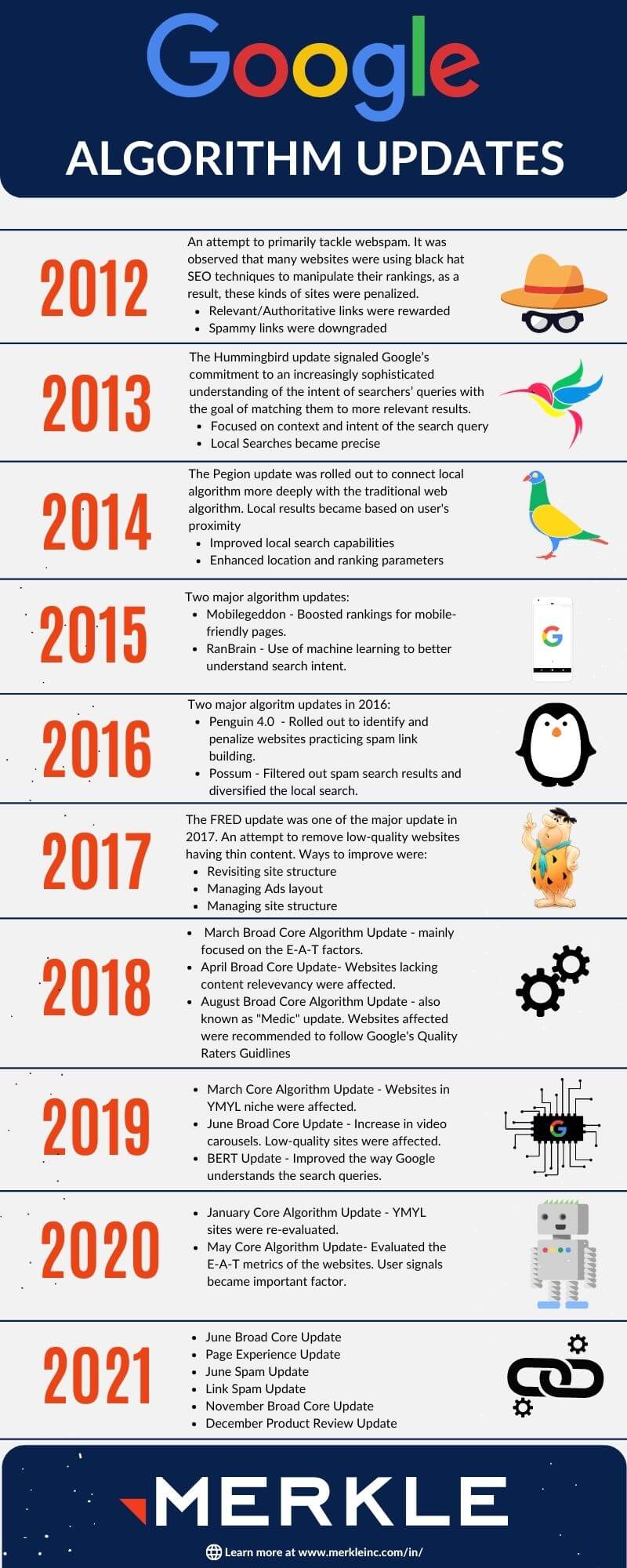
Image Source: Merkle
Google algorithm updates typically fall into two buckets: broad core updates, which are planned, announced updates (that often have funny names), and surprise updates, which usually happen behind the scenes.
Both types are aimed at improving user experience. But if there’s one thing we’ve learned from our background with SEO, it’s this: the algorithm works in mysterious ways.
If your Google rankings drop corresponds with an algorithm update, you’ll have to do some work to regain your place on the results page. Luckily, we’ve got some killer tips and tools for you to try out.
Helpful Tools:
Was There a Google Update notifies you of recent Google updates. Panguin pairs with Google Analytics to correlate those algorithm updates to changes in your website’s traffic.
Possible Fixes
When it comes to long-term, Google-approved steps you can take to boost your SEO performance, give these a try:
- Build an efficient website. Google loves websites that load quickly, look clean, and are easy to navigate.
- Incorporate useful links. When you link to trustworthy websites — and those sites link back to you — you gain authority in the eyes of Google.
- Publish valuable content. Instead of recycling things that you’ve seen on countless websites, add a bit of personality to your posts and pages. From a ranking perspective, a little originality goes a long way!
- Continuously improve your site. Google’s ranking systems don’t stay the same, so your site shouldn’t either.
Core Web Vitals (CWVs)
In 2021, Google began to emphasize a set of metrics called Core Web Vitals. Essentially, CWVs measure how easy it is for a user to interact with your site.
If your website has fallen off the front page, and you’re having trouble isolating the reason, double-check that your CWVs are in the right place. Though they weren’t an official Google algorithm update, we’ve seen cases where CWVs were the key to solving a rankings drop!
The E-A-T Model
Google’s machine learning algorithm favors sites that follow the E-A-T model — sites with a high level of expertise, authoritativeness, and trustworthiness.
To stay focused on the E-A-T perspective, run through these questions before you make substantial changes to your site:
- Do these changes boost our credibility in the industry?
- Are these changes rooted in solid, reputable research?
- Would I still recommend this site to my friends and family?
And remember, if you want your site to be primed for stratospheric growth, you should get in touch with a company that specializes in SEO. Though implementing a sustainable SEO strategy takes time, Google should reward your diligence with a stellar ranking spot.
Reason 4: Changes in the SERP
In the grand scheme of things, Google’s job is to match people with the content that best meets their needs. Because people’s interests, problems, and desires are constantly evolving, Google’s search engine results page (SERP) frequently needs to reinvent itself.
Let’s take a look at three key factors that could influence Google’s SERP, resulting in a potential rankings drop.
Appearance of New SERP Features
Imagine that you’re in the mood for a funny, family-friendly movie, so you enlist Google’s help.
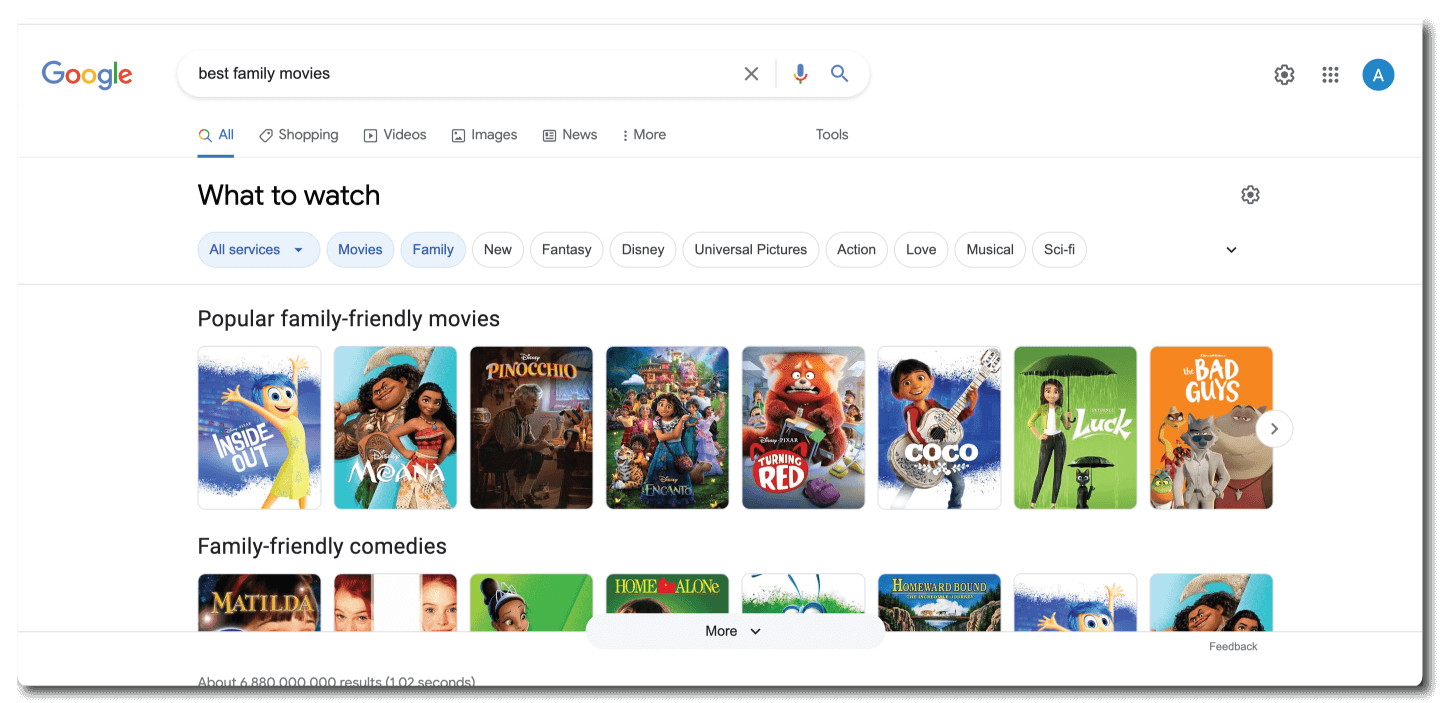
When you search “best family movies,” a carousel of animated films pops up at the top of the search engine results page (SERP). After scrolling for a while, you decide on Fantastic Mr. Fox, setting off on a riotous joyride through Wes Anderson’s imagination.
As the closing credits start to roll, you come to a tragic realization: your blog post, 13 Family Movies That Will Have You Laughing Your Socks Off, wasn’t at the top of the SERP. In fact, it wasn’t on the first page at all! Why not?
Here’s a big reason: you forgot to use Google’s new SERP feature! The carousel of animated films that you swiped through is one example of a SERP feature, but they can also be lists of restaurants, reviews, related questions, or other resources.
To guarantee that you’re maximizing traffic, you’ll want to ensure that your site is leveraging Google’s SERP features. Trust us on this one — they can mean the difference between showing up at the top of the results page and plunging all the way to page three.
Shifts in User Intent
Here’s another cardinal rule of SEO: society’s search intent changes with time.
Fad diets are a great example of this. Within the last ten years, bone broth diets have skyrocketed in popularity.
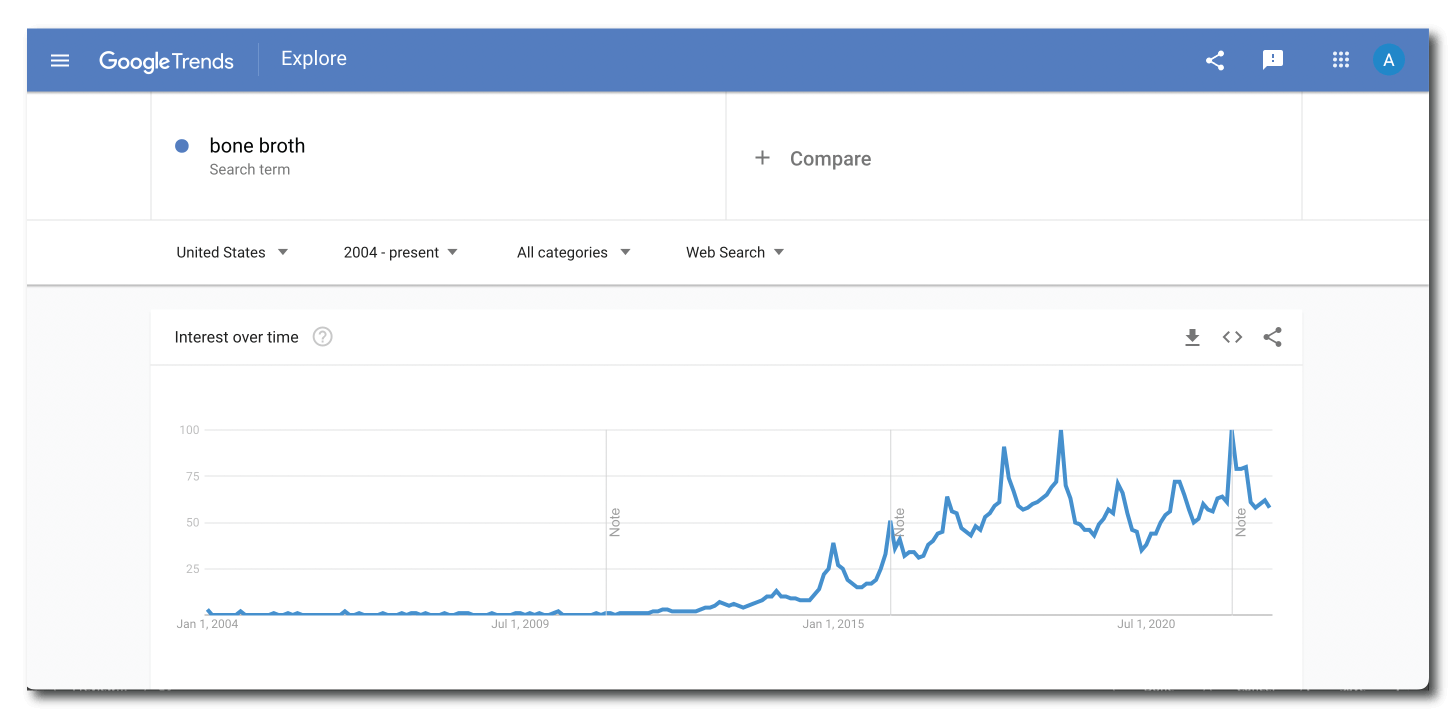
Early on, when people first began to search “bone broth diets,” they mainly wanted to know what bone broth diets were. In response, Google placed blog posts at the top of the SERP, to educate would-be bone broth guzzlers on the potential benefits of the diet.
In time, society’s appetite for bone broth education was sated — and it started to look for bone broth suppliers instead. As a result, bone broth blogs suffered rankings drops, and bone broth sellers leapt to the front page.
New Patterns in Top-Ranking Content
What’s even more important than satisfying search intent? Satisfying search intent in the best way.
If you have an elegantly written, 4,000-word blog post on bone broth, that’s fantastic. But if all of your competitors are outranking you with infographics and videos, it’s your job to adapt!
In this case, Google is clearly favoring different forms of media over written text. To recover your lofty Google ranking, you’ll need to transform your 4,000-word blog into an informative video.
Possible Fixes
An SEO specialist can help you maximize Google’s SERP features, in tandem with a special SEO tool like Ahrefs.
Pro Tip from Gary, our SEO Director:
No matter what, the #1 rule for staying SERP-relevant is this: be user-focused. Put yourself in the shoes of a potential searcher and reverse-engineer their thought processes. If a searcher is at their desk in deep research mode, a long-form study with a companion video might be the best fit. If they’re standing in line at Starbucks, Googling something from their iPhone, a short answer or infographic is more likely to meet their needs.
Helpful Tool:
Ahrefs documents changes in SERP history. After taking a look at how a SERP has changed over time, you can tie it back to your rankings drop and gain a better idea of how to regain your ranking.
We’ve already touched on the importance of providing content in the right format (for example, by turning your blog post into a video). But how can you correct a ranking drop that stems from shifting search intent?
Long story short: sometimes, you can’t. And that’s okay! If you pretend to be a bone broth seller, but you’re really an informative blogger, Google will detect it. And your website visibility could suffer as a result.
Instead, focus on aligning your site with the needs of your target market. With time, you’ll see a healthy trend in organic traffic, and your page rankings will slowly climb towards the top.
Reason 5: Shifts in the Competitive Market
Occasionally, your Google ranking will drop for a reason that has nothing (or very little) to do with you.
Even if your website is in tip-top shape and you’ve followed Google’s guidelines to a T, you can still fall victim to a shift in the competitive market. There are two main types of businesses that disrupt the Google landscape:
- The New Kids on the Block: Young companies that invest heavily in SEO-based growth can earn Google’s favor early on, which might knock your ranking down a few notches.
- The “Sleepy” Competitor: Old companies, often mom-and-pop shops, sometimes revamp their website and content strategy. Thanks to their years of online presence, these companies can grab a large share of Google’s real estate in a hurry.
Possible Fixes
Time to invite our good friend, introspection, into the room.
There are no clear-cut ways to overcome shifts in the competitive market. In this instance, your best bet is to ask questions like these:
- What are our competitors’ top-ranking pages doing better than our own?
- How can we mirror their success?
- How can we better align our SEO strategy with our target market?
Landing on the answers to these questions isn’t easy, but it’ll pay off in the long run. Once you’ve identified and triumphed over your company’s SEO weaknesses, you’ll be on your way to regaining your rightful share of traffic.
Helpful Tool:
Ahrefs Site Explorer allows you to dive into your competitors’ websites, zeroing in on their top-performing pages and content. Then, use Ahrefs’ Content Gap Analysis tool to reveal keywords that they’re outranking you for, allowing you to sketch a roadmap for improvement.
Reason 6: Bad Backlinks
Let’s say you’re cruising down the interstate and you start to feel a bit peckish, so you ask your friend to look for a great restaurant nearby. After a bit of research, they find one that sounds delicious: Barry’s Burger Bar, Home of the Bacon-Wrapped Barry Burger.
There’s just one problem. When you pull into the restaurant, it’s closed. Not just for the night — closed permanently!
That’s roughly what it feels like to run into a bad backlink. You come across a link that looks super interesting (say, our lovely blog post on how to scale e-commerce), but when you click on it, you’re met with an error.
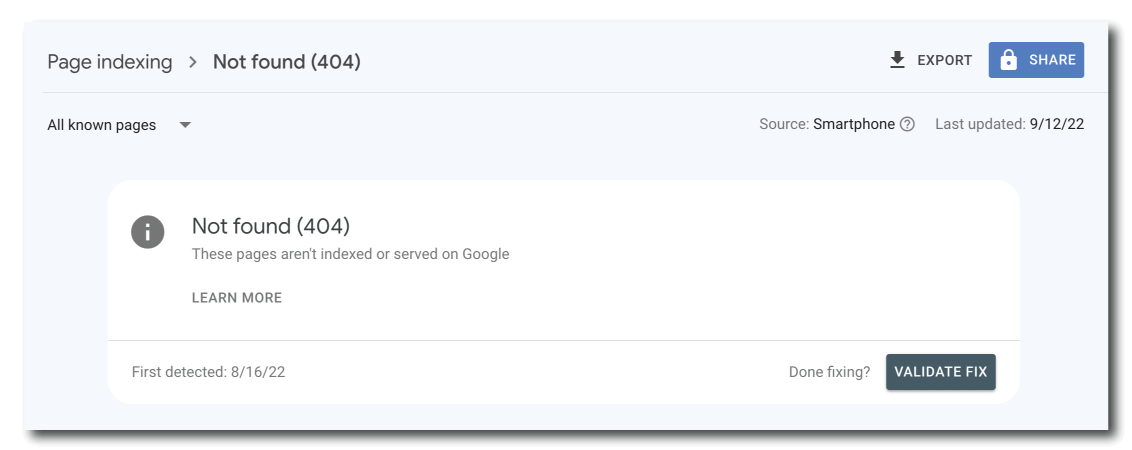
Errors frustrate users, so they frustrate Google too. If lots of the links that point to your site land on 404s — or, in some cases, just one really popular link — you might see your site’s Google ranking drop.
Keep in mind that broken links aren’t the only type of bad backlink! Spam links can also undermine your Google ranking. These links come from websites that Google doesn’t trust, so they weigh down your website’s authority.
Possible Fixes
To solve a rankings drop that’s caused by bad backlinks, you need to ensure that real, relevant backlinks have a useful place to land on your site.
You can do this by republishing the missing page or by redirecting the traffic from those links to another relevant page on your site.
Helpful Tool:
We’ve mentioned it before, but Ahrefs is an excellent resource for resolving backlink issues. It can analyze the backlinks to your website and identify pages on your site that are showing an error message.
Getting rid of spam links requires extra expertise — but it’s definitely doable!
If you’ve got someone who specializes in SEO on your team, they can curate a detailed list of spam links and submit it to Google using their link disavow tool. This process is a bit trickier, so it’s best to leave it to an SEO expert.
Wrapping up
We won’t sugarcoat it: diagnosing and fixing a Google rankings drop is a tall order.
When you’re navigating a shifting competitive market, changing user intent, and an evolving Google algorithm, it’s easy to feel overwhelmed. We get that. And we’ve got your back.
Here at Magneti, we embrace the challenge of helping businesses boost their organic traffic, even in today’s ultra-fast online world.
If you’re ready to optimize your website for sustainable growth, connect with Magneti’s SEO team today.
* This post was a collaboration between Magneti’s SEO Director Gary Magnone and our Copy + Content Specialist Samuel Todd.